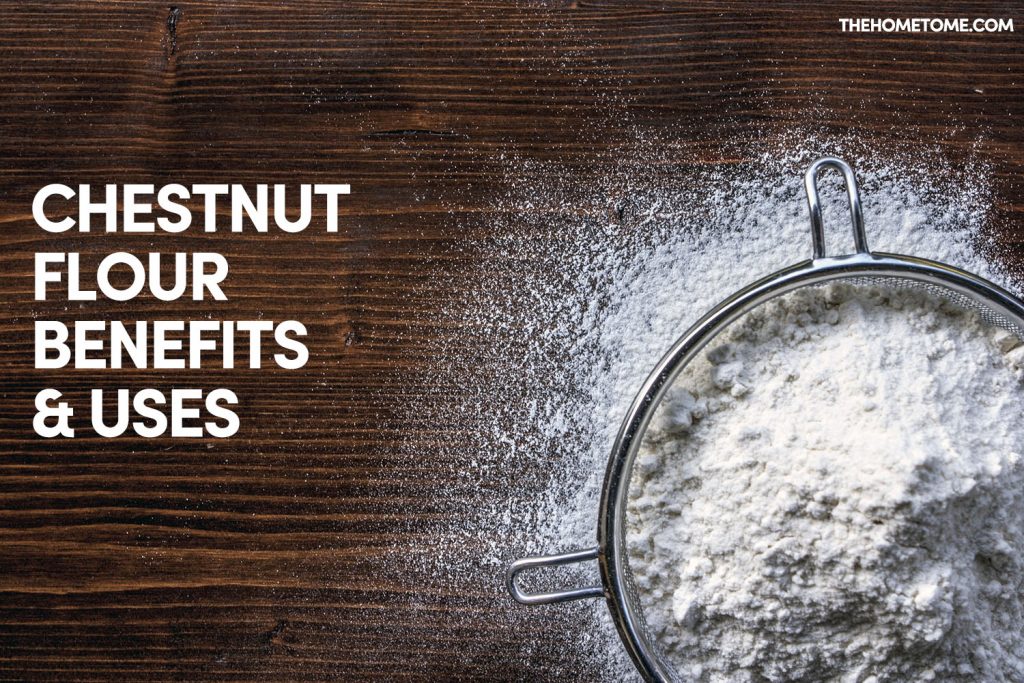Chestnut flour has been around for as long as the all-purpose flour and it has been part of Italian cuisine for centuries. Chestnut flour can be used for several things and it is simply a naturally sweet flour made from chestnut.
With its sweet taste, it can be a substitute for lots of flour too including gram flour.
The protein content of each flour differs and that’s the major difference between them. Chestnut flour is pretty versatile and it is often used as wheat flour replacement however not many know how amazing chestnut flour can be.
Nutritionally speaking, chestnut flour can be highly beneficial and although it is naturally sweet, it doesn’t contain any gluten hence it’s perfect for anyone avoiding gluten. Chestnuts are a typical fruit with quite a lot of benefits and the flour might have just as many benefits as the fruit.
Chestnut flour is an easy one to incorporate into any recipe. Chestnut flour can be perfect for creating your homemade bread and provide you with protein as well. So, read on for the benefits of chestnut flour and its uses in the kitchen as well.
Chestnut Flour Overview
Chestnut flour is made directly from chestnut fruit. The chestnut fruit is dried and ground to a fine powder which in turn is used for all kinds of baking. Chestnut flour is naturally sweet and it is quite popular in Tuscan cuisine and the Romans use this flour to make pasta. It is considered an expensive gourmet item due to its many uses too.
There are various types of chestnuts and the roasted one happens to be the most popular. Both chestnut fruit and flour can be of great benefit to the body and they are enjoyed across the world for their unique taste as well.
The taste of chestnut flour is often a reason why it has been included in many dishes over the years. Chestnut flour is known to have a light hazelnut color and light consistency. Although the chestnut fruit is more popular for its health benefits, there is a lot of reason to start incorporating the chestnut flour in your dishes too.
Chestnuts need very little treatment and the absence of gluten in the flour makes them ideal for those who can tolerate gluten. Chestnut flour is also popular in many regional dishes so when next you want to make some gluten-free brownies chestnut brownies are worth giving a trial.
Benefits Of Chestnut Flour
The sweet flavor of chestnut flour is not the only reason you should switch to this flour, it also contains some essential nutrients.
Thanks to the sweet taste of chestnut flour, it can be a great sugar substitute and it is healthier. While this flour has lots of benefits, below are some main ones.
1. May Help Increase Bone Mineral Density
This is one of the notable benefits of chestnut fruit and it applies to the flour as well.
Chestnut flour is rich in copper and magnesium which can help increase bone mineral density. It is an excellent source of mineral salts such as copper, potassium, phosphorus, sulfur magnesium, and calcium.
Chestnut flour is also a real concentrate of fiber and due to all these essential nutrients, it can boost bone growth and possibly lower the risk of stroke.
2. May Improve The Functioning Of The Immune System
Another surprising benefit of chestnut flour is that it is rich in proteins and has a high concentration of vitamin C that can help boost the immune system. It is also a great source of antioxidants just like the fruit thereby promoting a good nervous system and preventing illness too.
3. Low In Cholesterol
One of the reasons you can safely include chestnut flour in your everyday diet is that it is very low in cholesterol. It helps regulate mood and counteract fatigue and irritability. Chestnut flour is the ideal substitute for those with high cholesterol levels and it’s great for ensuring the functioning of the cardiovascular system.
4. It Promotes Better Brain Function
Chestnut flour is high in B-complex vitamins and it is good for ensuring a healthy brain and preventing nerve degeneration. This flour contains lots of essential nutrients and consuming enough of it can help promote brain function and also keep your metabolism working efficiently.

Uses Of Chestnut Flour In The Kitchen
What are the uses of chestnut flour in the kitchen? Despite the popularity of chestnut flour, many people still wonder what the uses of chestnut flour are and if it’s different from regular all-purpose flour.
Due to the nutritional value of chestnut flour, it will be advantageous to use it, and below are various ways it can be used in the kitchen.
- Chestnut flour can be used for muffins, cakes, cookies and other baked goods
- Used as a wheat flour substitute in making gnocchi
- Chestnut tortelli
- Biscuit
- It can be used in recipes for pasta, pancakes and pie crusts
- Chestnut flour can be combined with other gluten-free flour to make gluten-free snacks.
There are many gluten-free recipes you can create with chestnut flour. While the ones listed above are its notable uses in the kitchen, they can be used for preparing classic regional dishes and there are lots of traditional recipes that make use of Chestnut flour a well.
Is chestnut flour better than wheat flour?
Chestnut flour contains a high amount of nutrients hence it’s more nutritious than wheat flour and can be a great alternative to other flour as well. Chestnut flour is high in amino acids, protein, and fiber, which is something most gluten-free flour lacks.
Wrapping Up
According to research, chestnut flour is the best option for gluten-free bread and the good news is that it is low in cholesterol and can be the best option for those with allergies or gluten intolerance.
This flour is also a great way to improve your food’s nutritional value and it can help lose some weight by curbing your appetite as well.

